I'm not going to lie; I love a good cheese sauce. Whether it be for my pasta or veggies, I can't say no to a cheesy dish. However, as a vegan, that's unfortunately not an option for me. That is until now! This vegan pistachio pesto sauce is everything a cheese sauce should be and more. Nutty, creamy, and with the perfect amount of saltiness, this sauce will have you forget about dairy-based sauces.
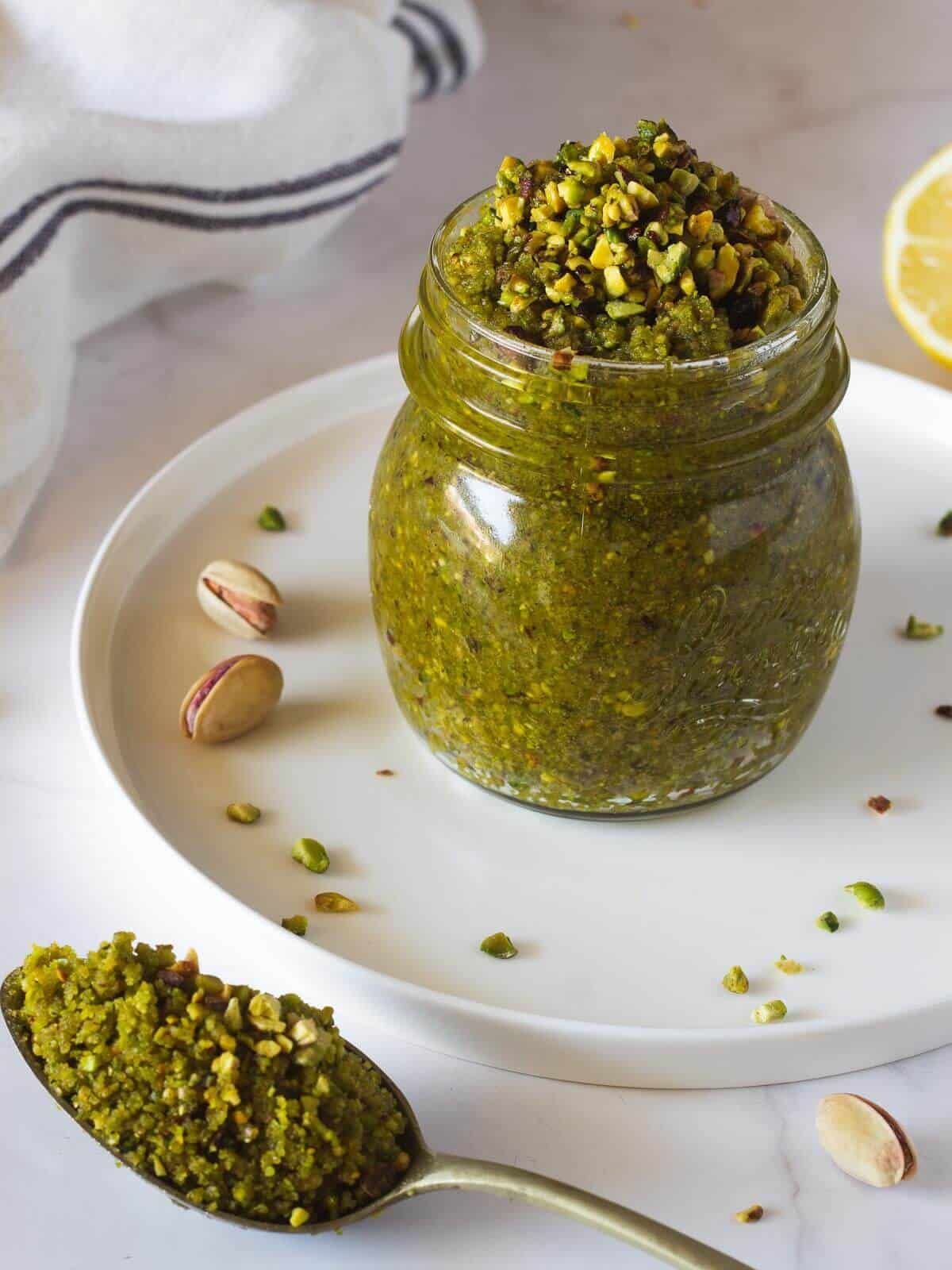
I don't want to blow my own trumpet, but we live in Italy, and we love pestos; as you might have noticed, given the myriad of pesto recipes we have on this blog; and I have to say, our basil pistachio pesto is the best one we have ever tried.
Before embarking on making our pistachio pesto, we bought excellent brands and tasted it in restaurants, and we were pretty disappointed.
We are big fans of pistachios. We love everything pistachio.
You guessed it, which one is the ice cream flavor we both always ask for! We love cream on our toast, snacking pistachios on their shell, tossing toasted pistachio into our pasta and risotto, and making delicious pistachio and chocolate chia pudding.
But we have always been disappointed with pistachio pesto. Maybe our expectations were too high. We dug into all kinds of recipes and analyzed every component and its quantities before deciding what stayed or left.
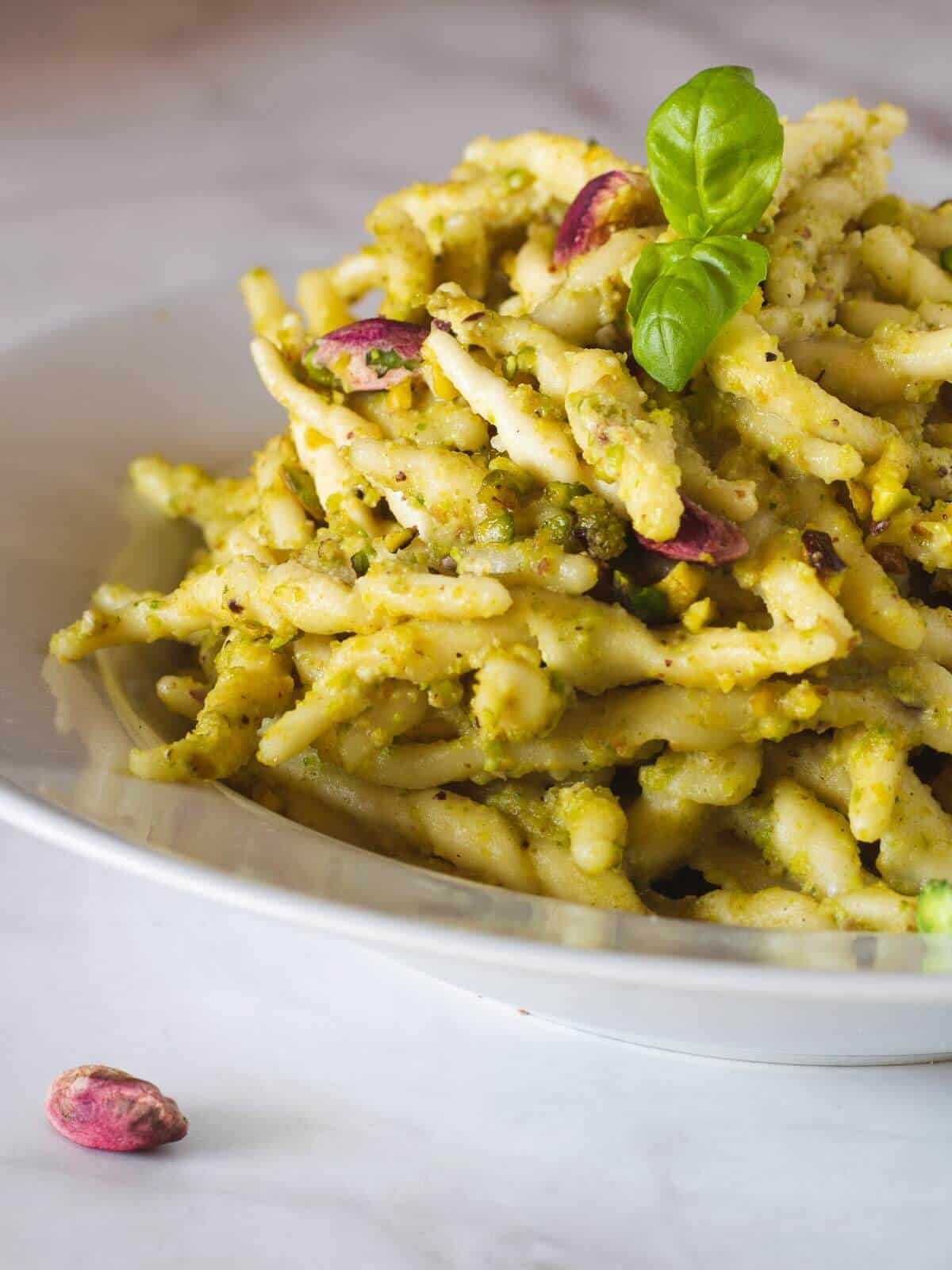
You can use this delicious pesto in a pasta salad, simply tossing it with your choice of pasta and adding fresh herbs like arugula or roasted vegetables.
This is the result. Read more about the theory of flavor below.
Jump to:
🧾 Ingredients
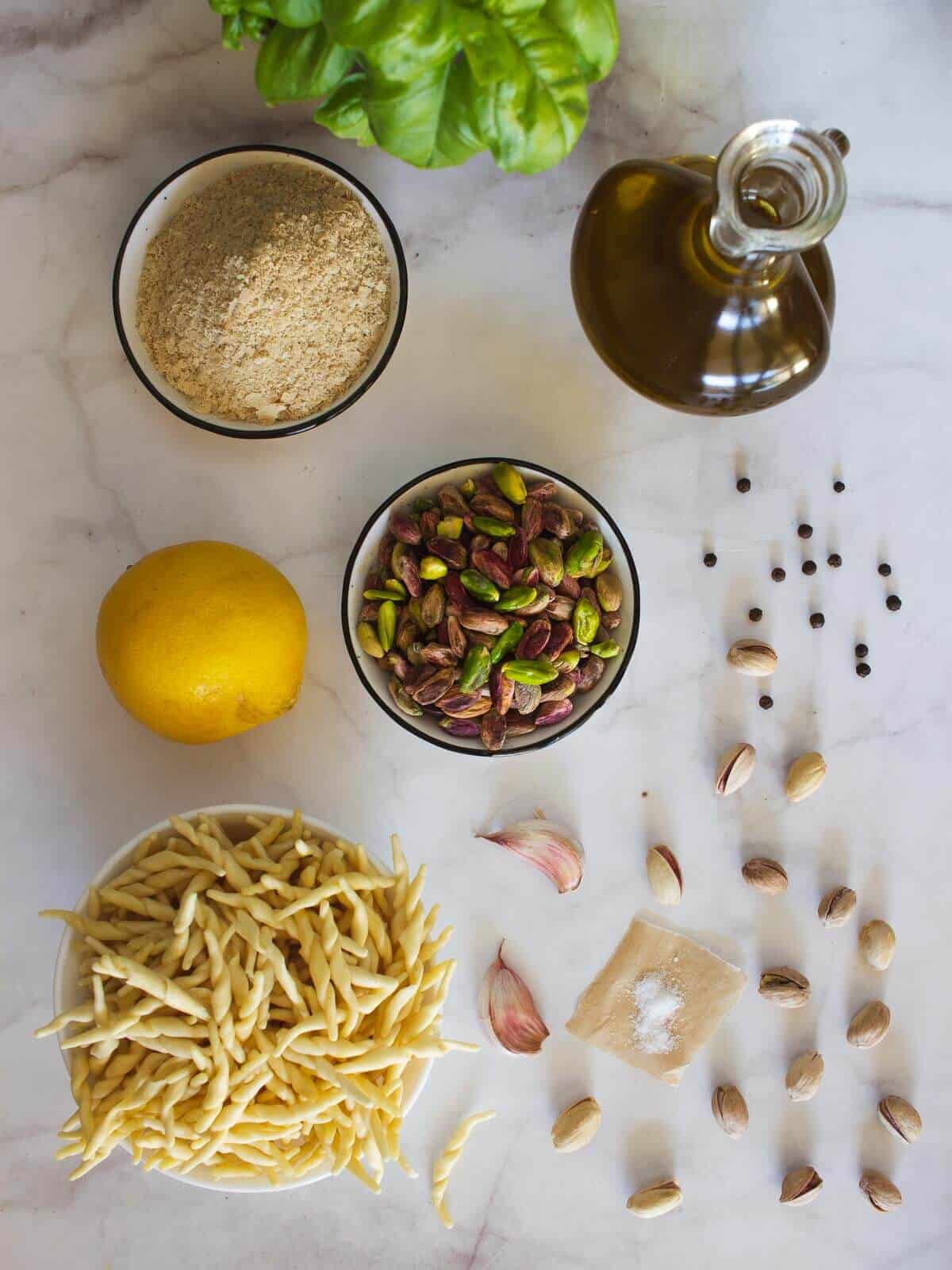
- Toasted Pistachios: Toasting these babies deepens their natural, nutty flavor, adding complexity to the pesto. They also provide a healthy dose of protein and unsaturated fats.
- Fresh Garlic: Bringing a robust punch of flavor, garlic elevates the sauce from good to unforgettable. Bonus: it's great for your heart!
- Fresh Basil Leaves: The aromatic superstar of any classic pesto, fresh basil adds a sweet, peppery aroma and bright green color. Plus, it's a natural mood enhancer.
- Extra-Virgin Olive Oil: This liquid gold binds all the ingredients together and adds a rich, velvety texture. EVOO is a source of antioxidants and healthy monounsaturated fats.
- Lemon Juice: A splash of this brightens up the sauce, cutting through the richness of the nuts and oil. The vitamin C also helps keep that vivid green color.
- Nutritional Yeast: The vegan MVP! This adds cheesy, umami notes while keeping the sauce plant-based. It's also packed with B vitamins.
- Salt and Black Pepper: The classic seasoning duo, amplify the natural flavors of all the ingredients.
Optional: crushed red pepper flakes
🔪 Instructions
To make this homemade pistachio pesto recipe, follow the same instructions as you would for the more traditional basil pesto or arugula pesto.
The differences are in the number of herbs used and the treatment you give to the pistachios, as toasted pistachios may come unshelled, and the shells directly affect the color of your homemade pesto.
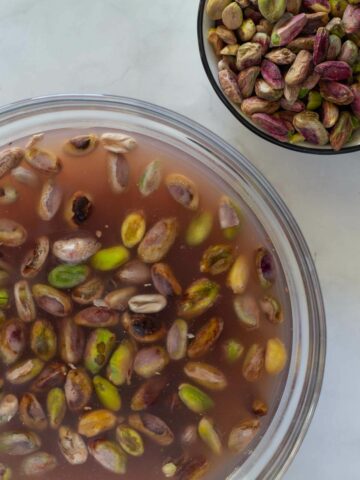
Step 1: Only not using shelled pistachios. Cover the pistachios with boiling water and leave them soaking for a minimum of 15 minutes.
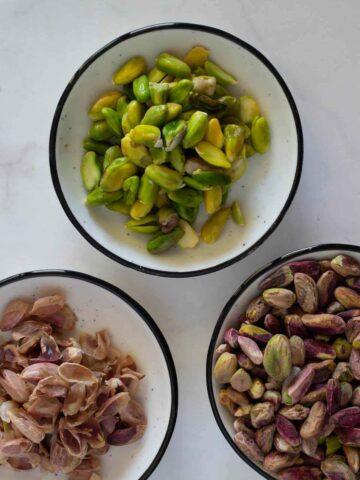
Step 2: Remove the pistachio skins and reserve them. This step is a bit long, but that will give us a bright green pesto!
You can also choose to pop the shells off in 5 minutes simply roughly.
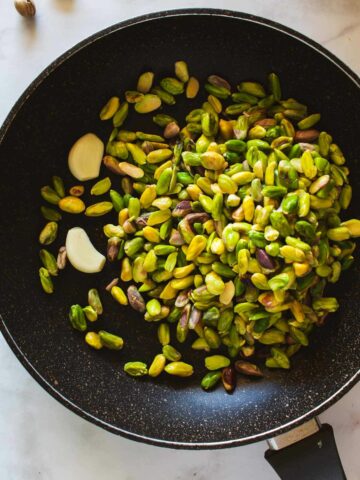
Step 3: In a skillet, on medium-low heat, lightly toast the pistachios with the peeled and halved garlic cloves until the pistachios are fragrant. Don't burn them.
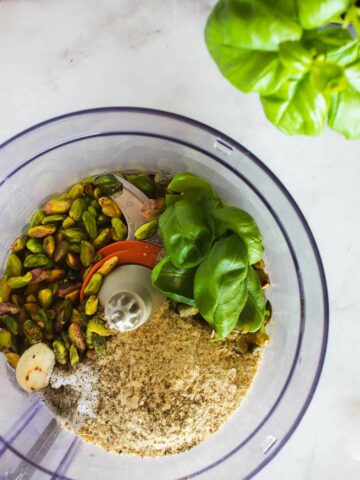
Step 4: Put the roasted pistachios, fresh basil leaves, nutritional yeast, salt, pepper, and drizzle in the olive oil in a blender or food processor.
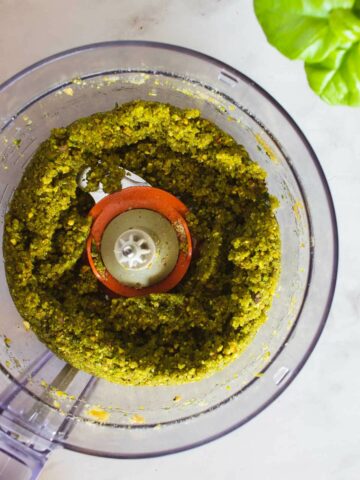
Step 5: Blend and gradually add a little water until you have a creamy mixture. The amount of water can increase or decrease based on how we want to use our pesto or how we like it.
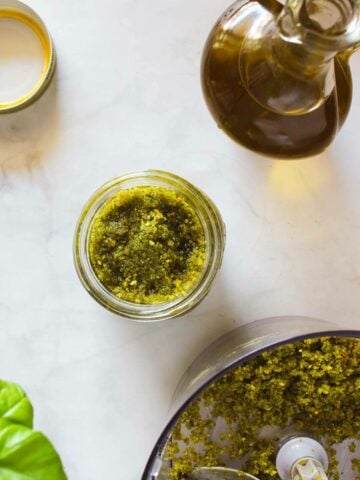
Step 6: Store in an airtight container or serve with pasta.
🫙 Storage
How To Refrigerate Pesto: To refrigerate pesto, make sure you store it in an airtight container and refrigerate it for up to 3 days. Also, to prevent your green basil pistachio pesto from browning and make it last for longer, press the pesto down with a spoon to let all the air out and pour a layer of olive oil on top to cover the surface. Alternatively, simply place a piece of cling on top of the surface of the pesto sauce.
How To Freeze Pesto: Basil pistachio pesto freezes perfectly! You can freeze it either way, but I like to use ice cube trays to use the portions as needed instead of thawing a whole batch.
🥢 How to serve
This vegan pistachio pesto is so versatile!
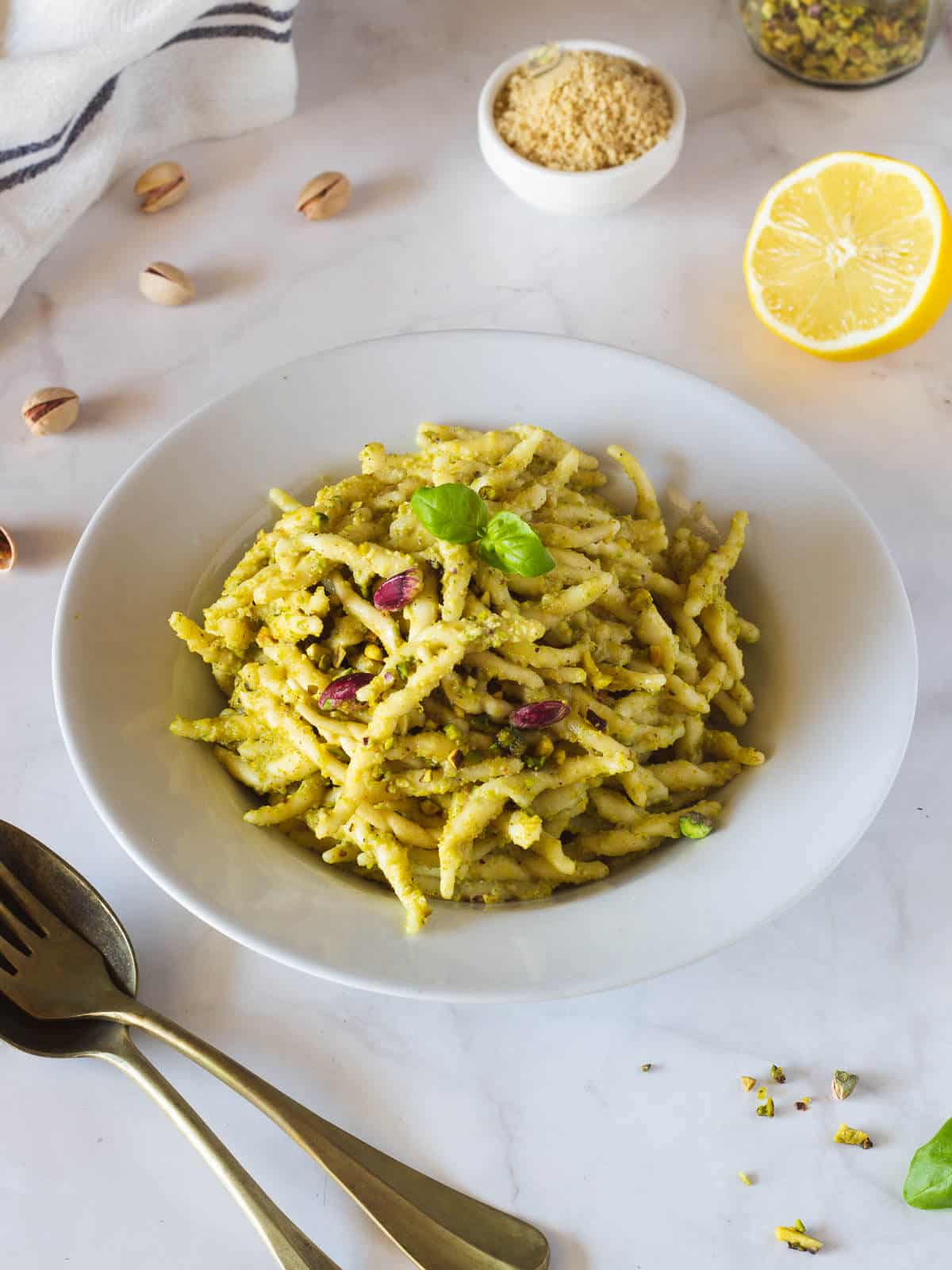
- Pasta salad - I love using it as pasta or gnocchi sauce. Just as we use our carrots tops pesto.
- Bruschetta - this pesto is perfect for adding on top of toasted Italian Artisan bread. I love tossing some cherry tomatoes on top.
- Dip for Veggies - mixing this vegan pesto with some fresh vegetables is a winner. We like to toss some on top of our warm couscous salad, and it also pairs well on top of vegan poke bowls; as we regularly do with our vegan mint pesto.
- Pizza - you can turn any basic pizza into a blast just by scooping some of this pesto on top. It works fantastically when making vegan pizza that uses vegan bechamel in replacement of the classic marinara sauce.
- Potatoes - use this sauce on roasted potatoes or in plain mashed potatoes to give them an amazing flavor boost!
- Salad dressing - just make sure to thin it out with some olive oil or water, then you can toss it with your favorite salad.
🍝 How to choose pasta
Pesto sauces perform very well when paired with pasta that has creases. That's why using rotini, maccheroni, fussili, farfalle (tie bows) are great choices.
We went for trofies, a Ligurian pasta that we love because it has one of the perfect bites we have tasted since living in Italy.
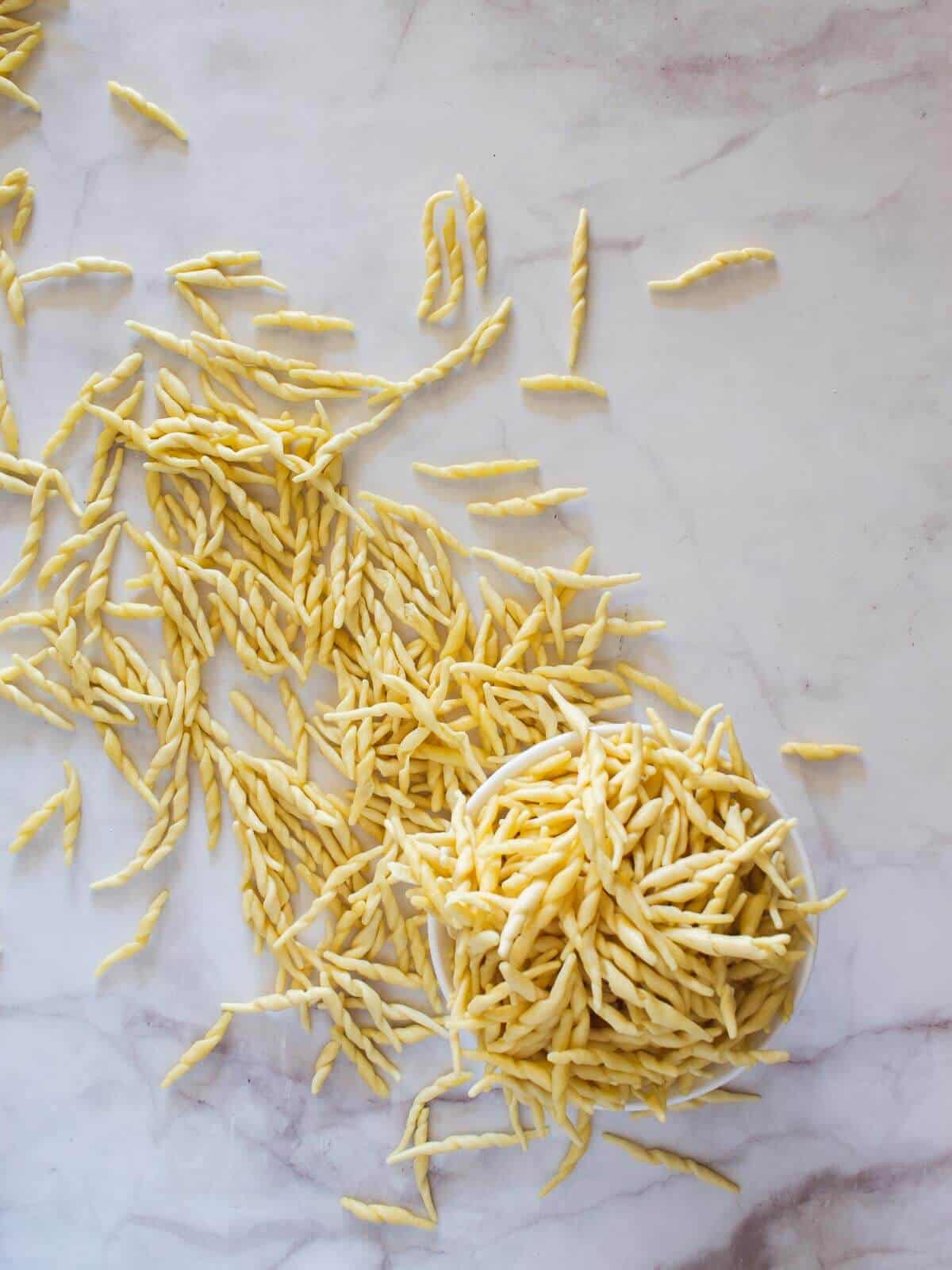
In fact, pesto was born in the Ligurian region, home to Genova, where the famous Basil Pesto alla Genovese was born; and guess what pasta they make to eat their pesto: trofie.
This is because it can pack lots of pesto within its folds.
📖 Variations
Pesto sauces are extremely versatile and easily adjustable. That's one of the reasons why we love them so much; although you can find most of the pesto nuts variations on this blog, let's get into the how-to substitute ingredients.
Toasted pistachios
You can use any type of nuts to make pesto. The most widely used are pine nuts and almonds; cashew nuts and walnuts are also popular options.
If you have extra 3-5 minutes to spare, whatever nuts you are using, I recommend toasting them in a skillet to ensure the flavor comes out more prominently.
Garlic
A non-negotiable ingredient. Especially if you are making a vegan pesto.
You can leave them raw, in which case I'd recommend removing the germ since the taste can be very strong and overpowers pistachio's delicate flavor.
My way to go for any pesto is briefly toasting them in a skillet and putting a lid on to make it faster. This will soften the flavor and add a distinctive garlicky but not uncomfortable flavor.
You can also use ground garlic instead; just make sure you use the following ratio: One fresh garlic clove equals ¼ teaspoon of granulated garlic powder. You can apply this conversion to dehydrated garlic flakes, powdered or minced refrigerated garlic.
Basil leaves
I like to keep the basil-to-pistachio ratio low because basil is strong and pistachio isn't. If I want basil pesto, I'd make it with a "less special" nut, as the nut choice will be almost unnoticeable.
Arugula and mint leave also pair very well with this homemade pesto.
Olive oil
Olive oil adds creaminess to your pesto, which is a very important component, but if you are cooking oil-free, you can use water instead. I recommend using warm water, and if making pasta is part of your pesto-making plans, just use some of the starchy water, as it will help to bring more creaminess into your sauce.
Lemon juice
Although lemon juice and lime juice are very interchangeable in many recipes, I wouldn't say pestos apply. Of course, it is a matter of taste, but as much as I love lime, fresh lemons trick here.
Nutritional yeast
Pesto recipes regularly have parmesan cheese as one of the most important components. When we veganize pestos, the trick is on the garlic, the lemon juice, and the nutritional yeast. This plant-based kitchen staple works wonders when emulating cheese's flavor.
And although, in some cases, it might not work perfectly, we find that it does when it comes to risottos, pestos, and vegan parmesan cheese used to sprinkle on top of pasta dishes and as a vegan salad dressing.
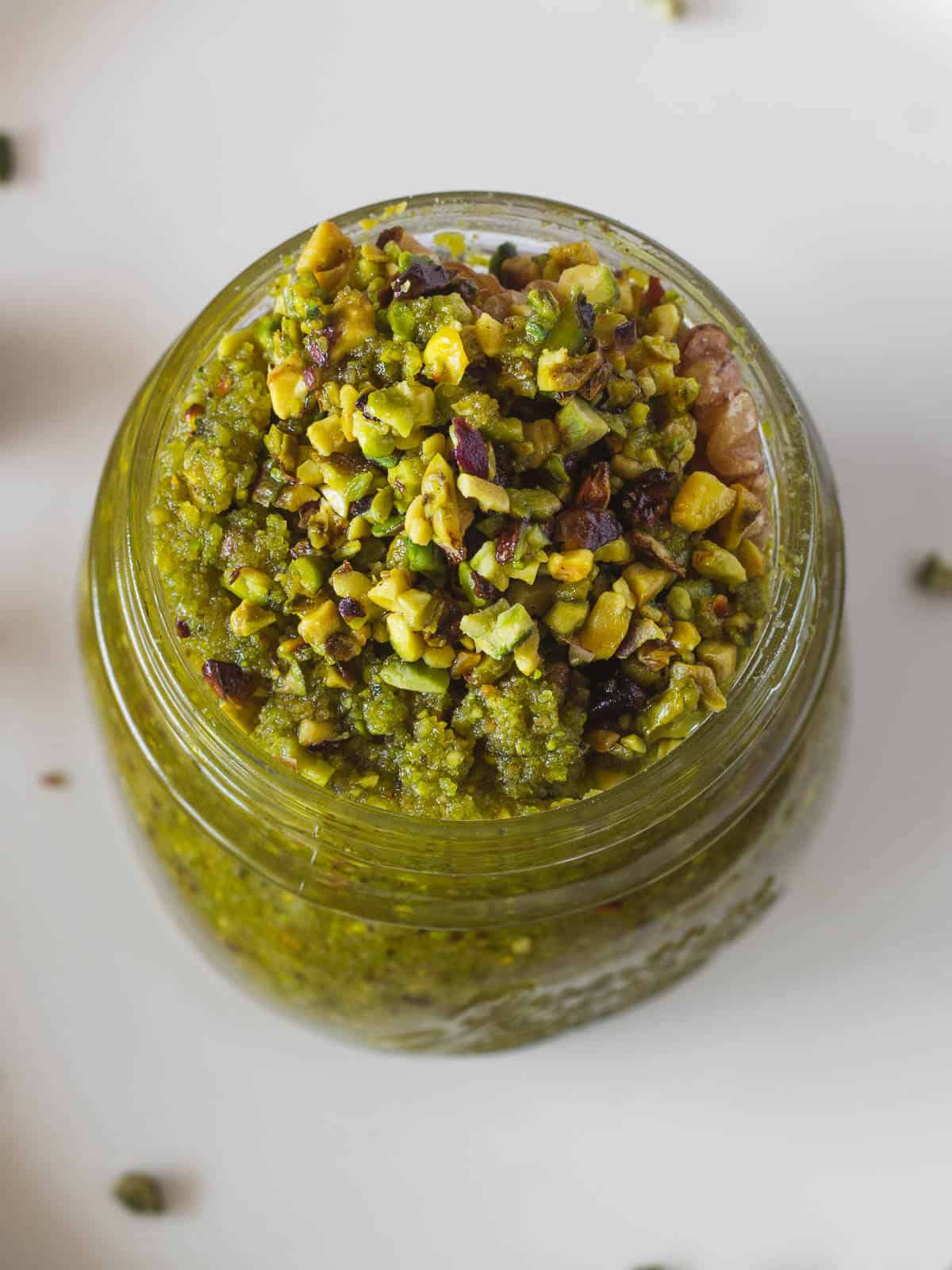
Check out more pesto recipes: Our sun-dried tomato pesto is so easy-to-make, just like the traditional basil pesto, kale and sage pesto, arugula pesto, mint pesto, and carrot tops pesto.
Try our roasted red pepper tofu pesto recipe for an oil-free, healthier pesto option.
⭐ If you try this recipe, let us know! 💬 Leave a comment, rate it, and don't forget to tag us @ourplantbasedworld on Instagram. Cheers!
📋 Recipe
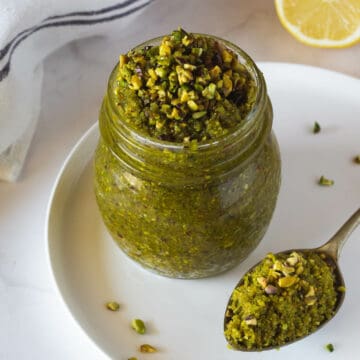
Vegan Pistachio Pesto Sauce + Pasta Salad
Equipment
Ingredients
- 1 cup pistachios toasted, 200 grams; see especial instructions if using unsalted pistachio kernels
- 2 garlic cloved, lightly toasted
- ⅓ cup basil leaves fresh, about 6 leaves
- 5 tablespoons olive oil extra virgin
- 2 tablespoons lemon juiced
- 6 tablespoons nutritional yeast
- ¾ teaspoon sea salt
- ¼ teaspoon black pepper freshly ground
Optional
- 28 oz trofie pasta 3.5 oz per serving
Directions
- Boil 5 cups of water and pour them into a medium bowl on the pistachios. Let them soak for at least 15 minutes.
- Peel the pistachios.
- Toast pistachio (only if using untoasted kernels) and garlic. In a skillet on medium-low heat, toast the pistachios and the garlic cloves. Don't let them burn. If you consume your pesto immediately with pasta, set the water to boil with salt, cook the pasta according to the package directions, and save some of the starchy pasta water, which will come in handy to stir the pesto. Make sure the pasta is not overcooked, as you will finish the cooking with the pesto, and you don't want it to turn out soggy.If using toasted pistachios, make sure you briefly toast the garlic cloves, cutting the middle to make it faster. This way, the garlic won't overpower the pistachios' delicate flavor.
- Blend. Put all the ingredients in the food processor, or you can also use a small blender. Blend for 2-3 minutes until you reach the desired consistency. Traditional pesto is made with pestle and mortar, so it is meant to have some texture. I like to leave my pesto chunky, but you can blend it for longer if you want a more creamy consistency.
- Adjust with water for fluidness or nutritional yeast for thickness.
- Serve. In the same pot where you cooked the pasta add just a little of the cooking water on low heat, followed by a couple of scoops of the pesto and the cooked pasta. Mix gently and serve hot.
Video
Notes
Nutrition Facts
Nutritional Disclaimer
The information shown is an estimate provided by an online nutrition calculator. It should not be considered a substitute for a professional nutritionist's advice. See our full Nutritional Disclosure here.
Affiliate Disclaimer
Please note that some of the links here are affiliate links, and I will earn a commission if you purchase through those links. I recommend all of the products listed because they are companies I have found helpful and trustworthy.
As the lead content writer and recipe developer at Our Plant-Based World, he combines his passion for health and sustainability with a Plant-Based Nutrition Certification to create accessible, delicious vegan recipes. His expertise in plant-based cooking supports the blog's mission of fostering a healthier, environmentally conscious lifestyle through simple and seasonal dishes. His commitment to making vegan cooking enjoyable and inclusive for everyone shines in each recipe and article.


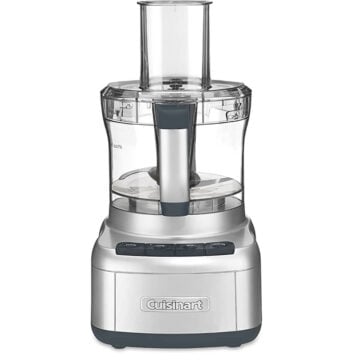
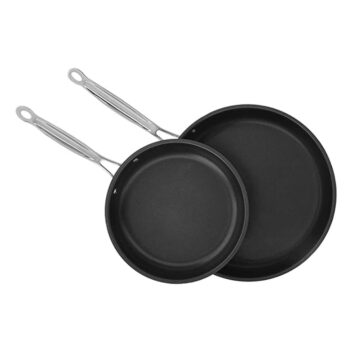

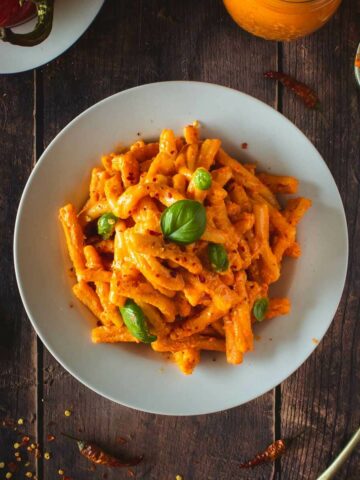
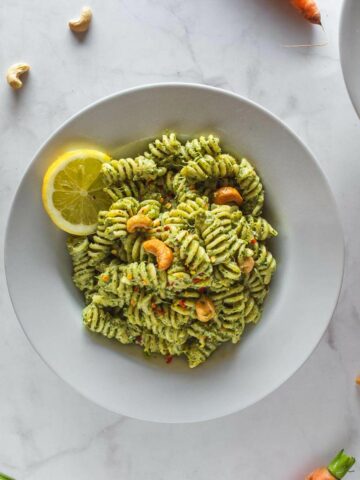
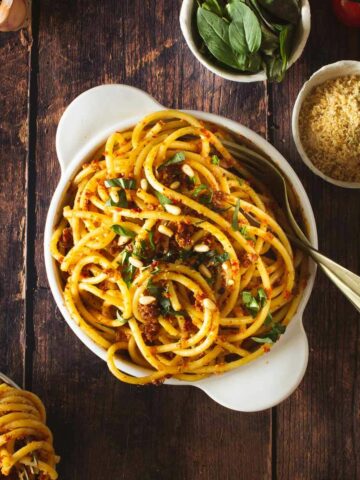
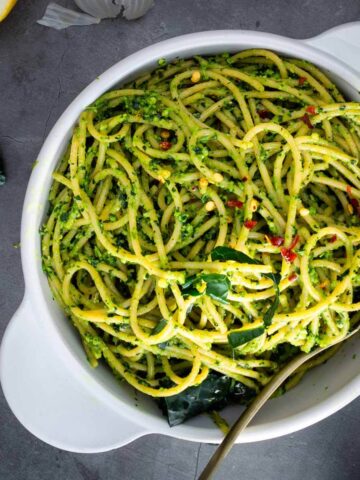
Jenn
Yum! this pistachio sauce is OUT OF THIS WORLD!
Gus
Thank you Jenn! We are glad you liked it!
Liza
What a fantastic recipe! The flavor of pistachios makes this pesto so good, and I never knew you could remove the dark skins so thank you for that wonderful cooking tip. Another winner guys!
Gus
Yep! It can make a difference in color and a very slight one in flavor! I am glad you liked it!
Ieva
Pistachios are my favourite nuts in the world! I was slightly sceptical that their flavour would get lost in this pesto, but wow, was I wrong! This pesto tastes amazing! Honestly one of the best ones I've ever made. Thanks for the recipe!
Gus
Hey Ieva, I am glad to know that the flavor met your expectations! Seems like we had the same concerns about making the pistachio pesto! 🙂
Heather
Wow toasting the pistachios added so much more flavor! This was delicious on some pasta!
Gus
Thank you, Heather, yes toasting the pistachios make such a big difference!
Suja md
Wow! this is my new favorite recipe!
Gus
Thanks for the feedback, Suja! I am glad the recipe made it to your top list!
Cara
Pesto is the best, and I loved this cashew version! So good!